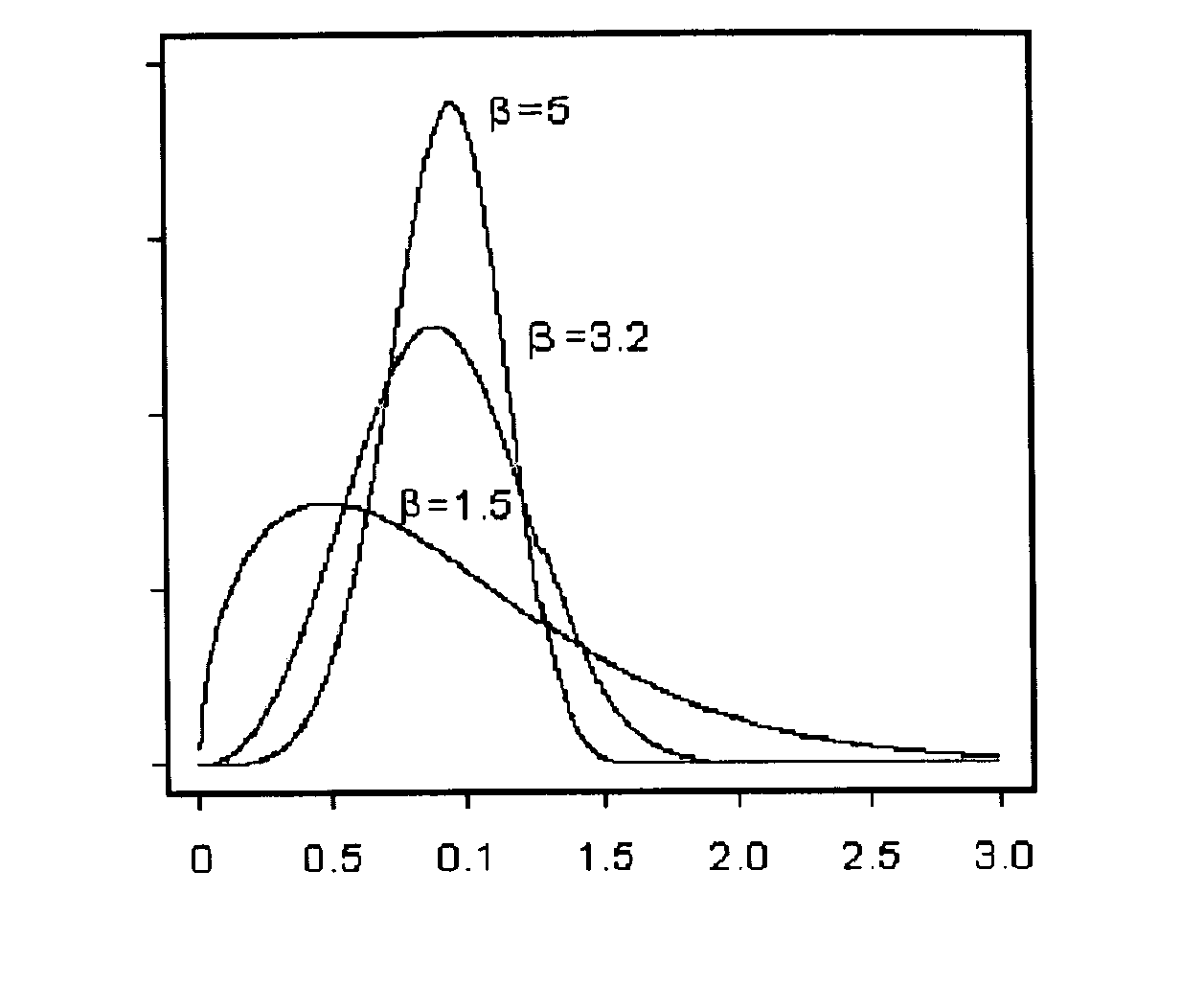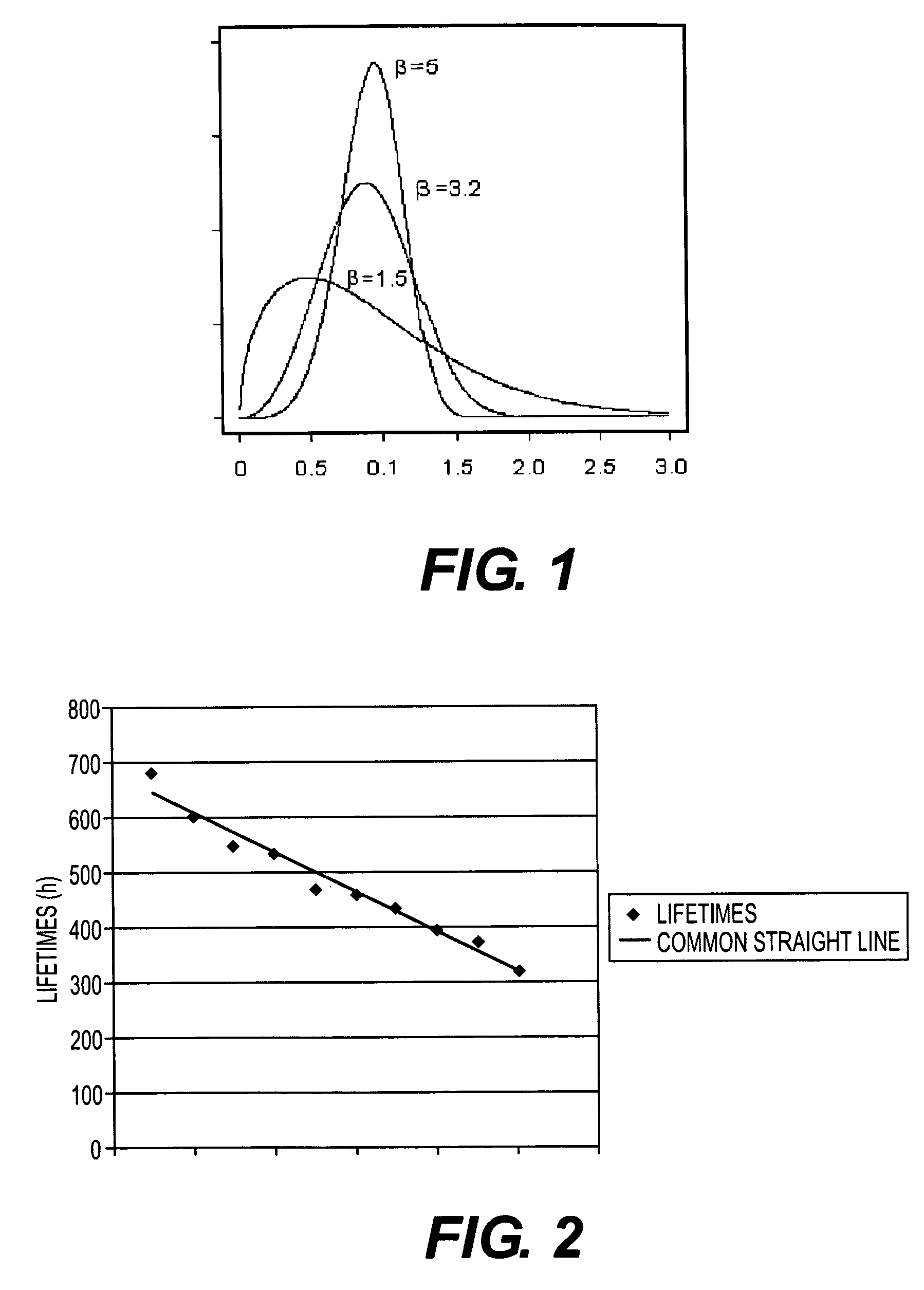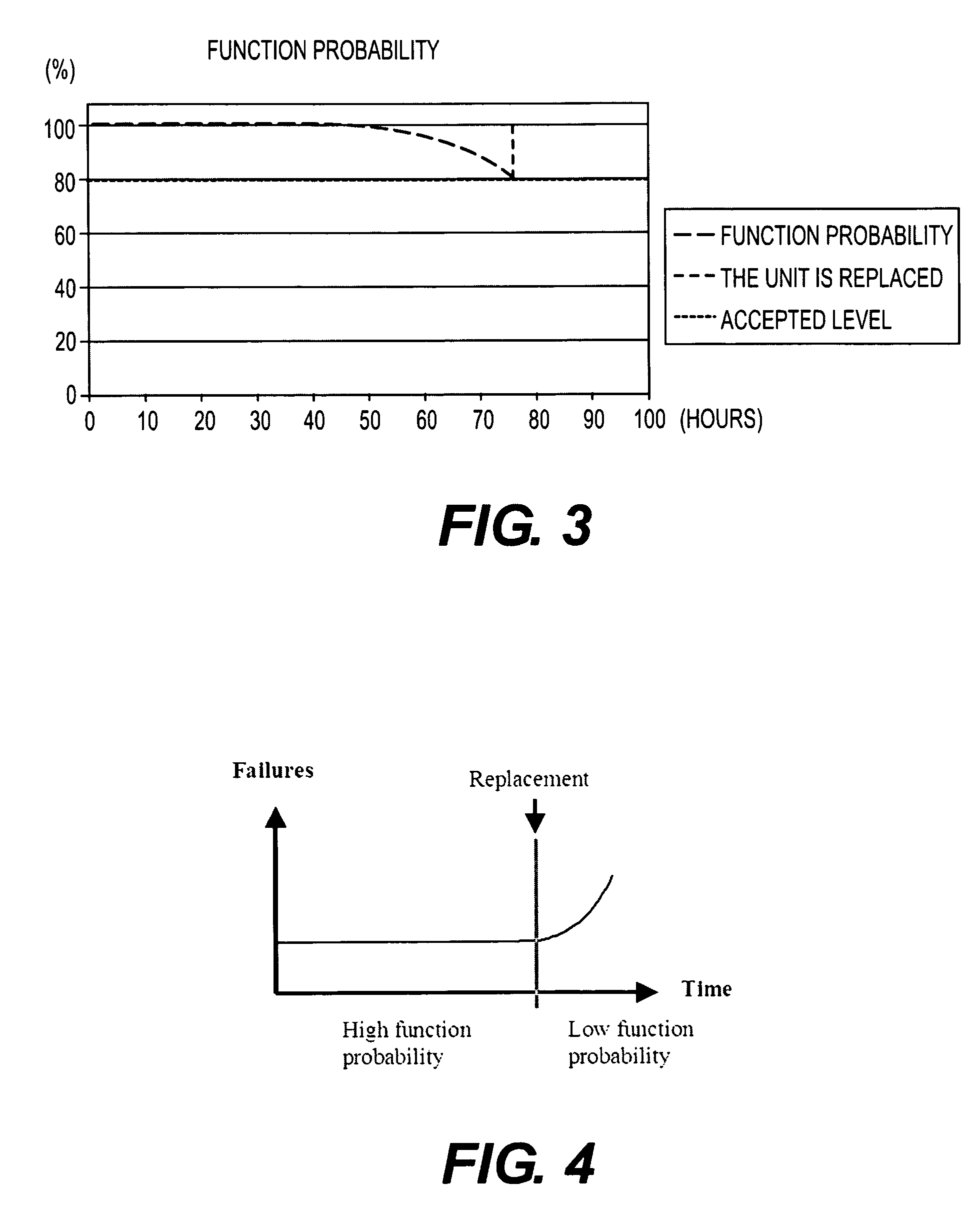Dynamic maintenance plan for an industrial robot
a robot and maintenance plan technology, applied in the field of industrial robot maintenance plan, can solve the problems of many robot parts exchange, direct association of wear and tear of the unit, and the complexity of such technical systems gets increasingly higher, so as to achieve accurate and reliable maintenance schedules
- Summary
- Abstract
- Description
- Claims
- Application Information
AI Technical Summary
Benefits of technology
Problems solved by technology
Method used
Image
Examples
example
[0132]Part Y is used in Robot Y. The program speed for the Robot is 1250 mm / s. It uses 60% of the envelope and the tool weight is 10 kg. The time for the replacement can then be estimated. The identification and graduation of the influence factors from a workshop is presented in the table. The approximated replacement time interval is from 20000 h for hard used parts to 40000 h for soft used parts.
[0133]
ProgramEnvelopePartspeedusageTool weightPart Y4310 = No influence on Part Y's lifetime5 = Big influence on Part Y's lifetime
[0134]Maximum and minimum set up values for the three factors.
[0135]
Envelope usageProgram speed (PS)(EU)Tool weight (TW)0 = 0 mm / s0 = 0%0 = 0 kg↓↓↓5 = 3000 mm / s5 = 100%5 = 16 kg[0136]Estimation of the total wear factor for Part Y[0137]Wear rate=Influence factor *% of max set up
[0138]WearratePS=4*(1250 / 3000)=1,667WearrateEU=3*(60 / 100)=1,8WearrateTW=1*(10 / 16)=0,625Sum=8=4,092
[0139]The totally achieved wear factor for Part Y is: (4.092 / 8)*5=2.5575. The ...
PUM
 Login to View More
Login to View More Abstract
Description
Claims
Application Information
 Login to View More
Login to View More - R&D
- Intellectual Property
- Life Sciences
- Materials
- Tech Scout
- Unparalleled Data Quality
- Higher Quality Content
- 60% Fewer Hallucinations
Browse by: Latest US Patents, China's latest patents, Technical Efficacy Thesaurus, Application Domain, Technology Topic, Popular Technical Reports.
© 2025 PatSnap. All rights reserved.Legal|Privacy policy|Modern Slavery Act Transparency Statement|Sitemap|About US| Contact US: help@patsnap.com



